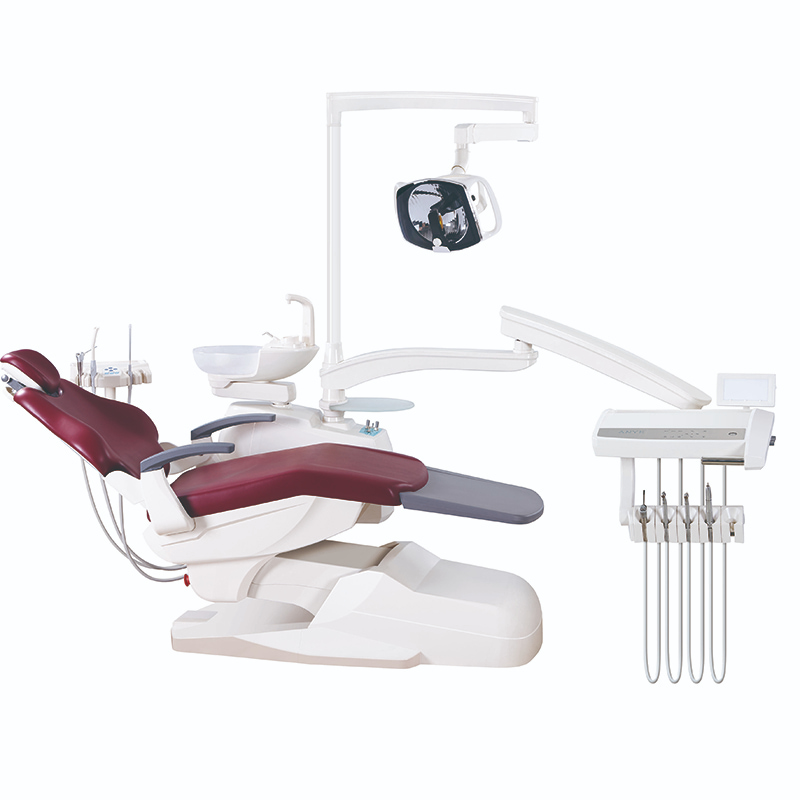Why Can A Good Dental Chair Satisfy The Patient?
In the realm of dental care, the importance of a good dental chair cannot be overstated. It is the cornerstone of patient comfort and satisfaction, significantly impacting the overall experience of a dental visit. This article examines the components that make a dental chair important for patient happiness, including its design, functioning, and psychological influence.
The Evolution of Dental Chairs
Dental chairs have come a long way from their rudimentary beginnings. Initially, they were simple benches with minimal adjustments.Dental chairs have evolved to reflect technological improvements and a better grasp of ergonomics and patient psychology. Modern dental chairs are sophisticated equipment designed to enhance patient comfort and dental practitioner efficiency.
Anatomy of a Modern Dental Chair
A modern dental chair is a marvel of engineering, meticulously designed to cater to the nuances of human anatomy. Key components include:
Ergonomic Design: The chair is designed to support the natural curvature of the spine, reducing strain and discomfort during long procedures.
Adjustable Features: These allow for customized positioning to accommodate different body types and treatment needs.
High-Quality Upholstery: Soft, breathable materials enhance comfort and are easy to clean, ensuring hygiene.
Integrated Technology: Features like built-in massagers, adjustable headrests, and foot controls improve both comfort and functionality.
Ergonomics and Patient Comfort
Ergonomics plays a pivotal role in the design of dental chairs. By ensuring that the body remains in a natural, tension-free position, ergonomic chairs mitigate discomfort and contribute to a more pleasant dental experience. Key ergonomic features include:
Adjustable Backrests and Seat Heights: These adjustments cater to the varying needs of patients, ensuring that each individual finds a comfortable position.
Lumbar Support: Proper lumbar support reduces back strain, which is particularly important during lengthy procedures.
Armrests and Footrests: These provide additional support and stability, enhancing overall comfort.
Psychological Impact of Dental Chairs
The psychological comfort provided by a well-designed dental chair is significant. For many patients, the sight of a comfortable, modern dental chair can alleviate anxiety and fear associated with dental visits. Features that contribute to psychological comfort include:
Aesthetic Design: A sleek, modern design can create a calming environment.
Comfortable Upholstery: Soft materials and cushioning can make the chair inviting and less intimidating.
Adjustable Positions: The ability to adjust the chair to a comfortable position can help patients feel more in control and at ease.
Technological Advancements
Technological advancements have revolutionized dental chairs, making them more comfortable and efficient. Some of the notable features include:
Memory Settings: These allow the chair to remember specific positions, reducing the time needed to adjust the chair for each patient.
Built-in Massagers: These can help relax patients, reducing anxiety and making the dental experience more pleasant.
Integrated Lighting and Cameras: These features enhance the dentist's ability to perform procedures efficiently, reducing the time patients spend in the chair.
The Role of Dental Chairs in Reducing Anxiety
Dental anxiety is a common issue that can prevent patients from seeking necessary care. A good dental chair can play a crucial role in reducing this anxiety. Features that help in this regard include:
Comfortable Design: A chair that provides physical comfort can help reduce overall stress levels.
Adjustable Positions: Allowing patients to find a comfortable position can make them feel more in control and less anxious.
Soothing Features: Built-in massagers and other comfort features can help relax patients during procedures.
Balancing Patient Comfort and Dental Efficiency
While patient comfort is paramount, it is also essential to ensure that dental chairs are designed for efficiency. A good dental chair strikes a balance between these two needs, allowing dentists to perform procedures effectively while ensuring patients are comfortable. Key features that help achieve this balance include:
Easy Adjustability: Quick and easy adjustments allow dentists to position the chair optimally for different procedures.
Integrated Tools and Technology: Features like built-in lighting, cameras, and instrument trays reduce the need for dentists to move around, enhancing efficiency.
Sturdy Design: A well-built chair provides stability, ensuring that both the patient and dentist can focus on the procedure without distractions.
Conclusion
In conclusion, a good dental chair is integral to patient satisfaction and the overall success of a dental practice. By understanding the importance of dental chairs and prioritizing patient comfort, dental practices can enhance patient satisfaction, reduce anxiety, and improve overall outcomes.



Leave a comment